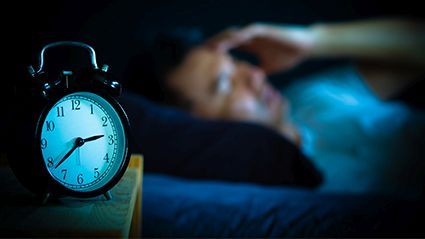TUESDAY, Sept. 12, 2023 (HealthDay News) — Staying up late comes naturally to some folks, whether they’re working or relaxing deep into the night.
But being a night owl might come at a cost to one’s health.
People who are night owls have a higher risk than early birds of becoming diabetic, a new study has found.
“We found that night owls were at 72% increased risk of developing diabetes when we compare them to early birds,” said lead researcher Dr. Sina Kianersi, a postdoctoral research fellow with Brigham and Women’s Hospital in Boston.
A large part of that is lifestyle, the researchers found.
“We found that night owls are in general more likely to have an overall unhealthy lifestyle,” Kianersi said. “They were more likely to have a poor diet, to have an unhealthy weight and be less physically active. They were more likely to be current smokers or to drink alcohol in high quantities or even have poor sleep.”
But even when taking those lifestyle differences into account, night owls continued to have a higher diabetes risk, Kianersi said.
“This increased risk dropped from 72% to 19% when we adjusted and accounted for their lifestyles,” he said. “There’s 19% that’s not due to their lifestyle, and this could have public health and clinical implications.”
For this study, the investigators analyzed data for nearly 64,000 female nurses who participated in the long-term Nurses’ Health Study, which collected their health data from 2009 to 2017.
The data included the nurses’ self-reported chronotype, or the extent to which they perceived themselves to be an evening person or a morning person.
About 11% of the nurses said they were night owls, while 35% were early birds. The rest fell somewhere in between.
The results showed that, in general, a healthy lifestyle will take a hit from being a night owl.
Only 6% of nurses with the healthiest lifestyles were night owls, but 25% of those with the unhealthiest lifestyles were evening people, the study found.
However, the research also found that if a person’s work schedule matched their night owl proclivities, the increased risk of diabetes declined.
In fact, the increased diabetes risk was only apparent in those night owls who had worked less than 10 years of night shifts in the past, the investigators found.
“The association between being a night owl and having an increased diabetes risk is stronger among people who have done less night-shift work,” Kianersi said.
The results could mean that there are some people who have a genetic predisposition to being night owls, and that trying to go against that proclivity could be bad for their health, he added.
“For instance, we could come up with policies that advocate and are more suitable for flexible work hours or personalized work hours,” Kianersi suggested.
There are around 350 genetic markers that have been tied to the chronotype of humans, he noted, and this research suggests that understanding those genetics could help protect the health of night owls.
“This is something that that needs further research to see and understand if these genes are really playing a part in diabetes development,” Kianersi said.
The study findings were published Sept. 12 in the Annals of Internal Medicine.
On top of the genetics, more research needs to be done regarding the lifestyle impacts of a person’s chronotype, said Kehuan Lin, a doctoral student in epidemiology with the Harvard T.H. Chan School of Public Health, in Boston.
The findings “may imply that lifestyle may act as a potential mediator in the chronotype-diabetes association,” said Lin, who co-wrote an editorial about the new study. “However, we hope to emphasize that it still remains unclear why there are such strong associations between chronotype and lifestyle. In other words, is chronotype a causal risk factor, or does it simply reflect the clustering of lifestyle and other factors?” she said.
“For example, students experiencing heavy workloads might report an evening chronotype because they tend to work and are more alert at night. Simultaneously, they might also experience increased stress and feelings of being semi-depressed, have trouble sleeping and adopt a bad lifestyle,” Lin continued.
“Years down the line, if these stressful conditions ease, they may transition towards morning or intermediate chronotype and have improved lifestyle behaviors,” Lin said. “It is possible that life course circumstances serve as a common cause for both chronotype and lifestyle.”
If someone’s worried about the health effects of being a night owl, Kianersi said, some clinics and doctors do offer chronotherapy, “which basically is modifying one’s chronotype to be more suitable for their environment, to be more suitable for their life schedule.”
However, it’s a lot harder to change your chronotype than it is to eat better, exercise and get plenty of good sleep, Kianersi noted.
“Chronotype definitely needs a doctor’s attention,” he said. “It is more complicated, and I think one of the implications or one of the general messages of our work for night owls is that now that they understand that they might have increased risk of diabetes, they might want to make sure that they stick even harder to maintaining a healthy lifestyle.”
More information
Harvard Medical School has more about how sleep is regulated.
SOURCES: Sina Kianersi, DVM, PhD, postdoctoral research fellow, Brigham and Women’s Hospital, Boston; Kehuan Lin, MS, doctoral student, epidemiology, Harvard T.H. Chan School of Public Health, Boston; Annals of Internal Medicine, Sept. 12, 2023
Copyright © 2025 HealthDay. All rights reserved.

